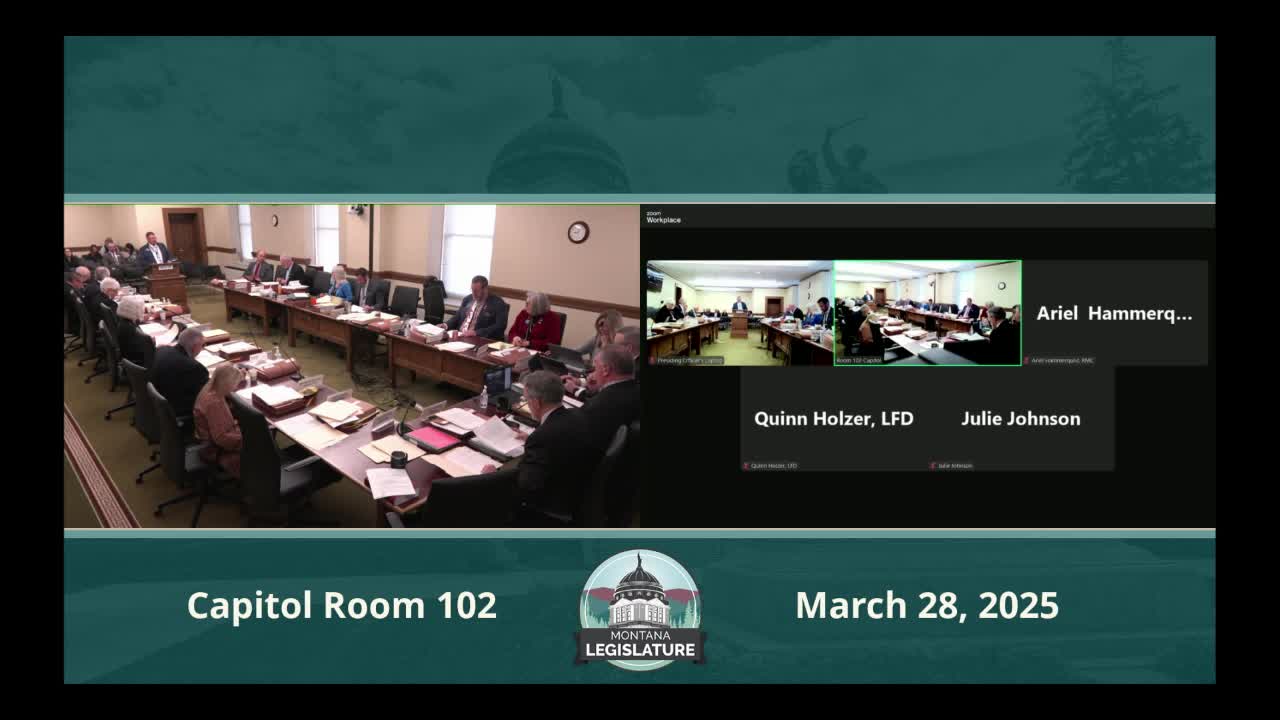Montana House Bill 861 secures funding for K-12 digital toolkit expansion
March 28, 2025 | 2025 Legislature MT, Montana
This article was created by AI summarizing key points discussed. AI makes mistakes, so for full details and context, please refer to the video of the full meeting. Please report any errors so we can fix them. Report an error »

A new digital toolkit aimed at enhancing educational resources in Montana schools is gaining traction, with 76% of school districts already signed up to utilize it. This initiative, funded initially through ESSER money, aims to provide high-quality curriculum and supplemental materials, particularly benefiting rural schools that have historically lacked access to such resources.
During a recent House Appropriations meeting, proponents of House Bill 861 emphasized the toolkit's potential to reach over 15,000 students across the state. The digital resources include more than 40,000 curriculum options, designed to be engaging and easily updated, unlike traditional textbooks. Rob Watson, representing school administrators, highlighted the toolkit's role in supporting early-career teachers, who often struggle to find adequate curricular materials.
The bill proposes an appropriation of approximately $10 per student, or about $366 per teacher, to maintain access to these resources. Advocates argue that the toolkit not only saves costs through state-level purchasing but also aligns with Montana's educational standards, ensuring that teachers have vetted and relevant materials at their fingertips.
Supporters, including educators and industry representatives, praised the toolkit for its ability to connect students with real-world career opportunities, particularly in fields like STEM. They noted that the digital format allows for interactive learning experiences, such as virtual guest speakers from various industries.
While the bill has garnered widespread support, some legislators expressed concerns about the long-term financial commitment it entails. A proposal for a four-year sunset clause was discussed, allowing future legislators to reassess the program's effectiveness and funding needs.
As the committee moves forward, the emphasis remains on ensuring equitable access to quality education resources for all Montana students, particularly those in underserved rural areas. The anticipated outcomes of this initiative could reshape the educational landscape, providing vital support to both teachers and students in the state.
During a recent House Appropriations meeting, proponents of House Bill 861 emphasized the toolkit's potential to reach over 15,000 students across the state. The digital resources include more than 40,000 curriculum options, designed to be engaging and easily updated, unlike traditional textbooks. Rob Watson, representing school administrators, highlighted the toolkit's role in supporting early-career teachers, who often struggle to find adequate curricular materials.
The bill proposes an appropriation of approximately $10 per student, or about $366 per teacher, to maintain access to these resources. Advocates argue that the toolkit not only saves costs through state-level purchasing but also aligns with Montana's educational standards, ensuring that teachers have vetted and relevant materials at their fingertips.
Supporters, including educators and industry representatives, praised the toolkit for its ability to connect students with real-world career opportunities, particularly in fields like STEM. They noted that the digital format allows for interactive learning experiences, such as virtual guest speakers from various industries.
While the bill has garnered widespread support, some legislators expressed concerns about the long-term financial commitment it entails. A proposal for a four-year sunset clause was discussed, allowing future legislators to reassess the program's effectiveness and funding needs.
As the committee moves forward, the emphasis remains on ensuring equitable access to quality education resources for all Montana students, particularly those in underserved rural areas. The anticipated outcomes of this initiative could reshape the educational landscape, providing vital support to both teachers and students in the state.
View full meeting
This article is based on a recent meeting—watch the full video and explore the complete transcript for deeper insights into the discussion.
View full meeting
